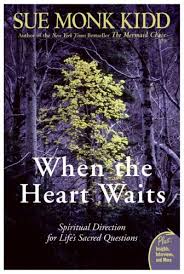How can the church better nurture spiritual growth for those in the second half of their lives? I contend that the way we answer that question may well change the way we disciple all of our members.
Certainly cultivating the spiritual disciplines is part of that answer, but it’s important to remember that those practices are not the goal. Christlike maturity is the goal – not just for individuals, but for all of us, corporately. Because we’ve often defaulted to talking about spiritual growth as a cognitive exercise (as if heaven was going to be one eternal Bible Quiz!) or a to-do list, we’ve allowed shallow `n busy programming to suffice when deep and intentional spiritual relationship is what’s needed most. We haven’t always been very good at recognizing and supporting those moving into their second adulthood.
Three years ago, I blogged through Father Richard Rohr’s Falling Upward: A Spirituality Through The Two Halves Of Life. I did so because I hoped that some of my blog readers would find the conversation of value as they interacted with those in their lives – and that some of the leaders (of small groups, Bible studies, or churches) reading in this little corner of Ye Olde Internet might begin asking different questions about how to better serve those in their care.
 Another one of those books that offers helpful description for those stumbling into the disorientation of midlife is Sue Monk Kidd’s When The Heart Waits: Spiritual Direction For Life’s Sacred Questions (HarperOne, 1990). You may recognize Sue Monk Kidd from her more recent works like The Secret Life of Bees or The Dance of The Dissident Daughter. But before she wrote those books, she grappled with finding herself at midlife a stranger in the strange land of her own life. I’ll be blogging through the book, a chapter at a time. If you’ve read the book, I’d love to have you weigh in. And if you haven’t, why not pick up a copy and join the conversation?
Another one of those books that offers helpful description for those stumbling into the disorientation of midlife is Sue Monk Kidd’s When The Heart Waits: Spiritual Direction For Life’s Sacred Questions (HarperOne, 1990). You may recognize Sue Monk Kidd from her more recent works like The Secret Life of Bees or The Dance of The Dissident Daughter. But before she wrote those books, she grappled with finding herself at midlife a stranger in the strange land of her own life. I’ll be blogging through the book, a chapter at a time. If you’ve read the book, I’d love to have you weigh in. And if you haven’t, why not pick up a copy and join the conversation?
* * * * * * *
That’s the sacred intent of life, of God – to move us continously toward growth, toward recovering all that is lost and orphaned within us and restoring the divine image imprinted on our soul. And rarely do significant shifts come without a sense of our being lost in dark woods, or what T.S. Eliot called the ‘vacant inerstellar spaces.’
Here is a perfect description of the collision between knowing a bunch of information about what spiritual development looks like and the stunning experience of disorientation that occurs in our souls when we realized we’ve somehow wandered into the dark woods without intending to do so. Kidd explained, “Believe me, I wanted to shove all this away and pretend it didn’t exist. But I couldn’t. Life tasted of cardboard and smelled of stagnant air. At times, I found myself shut in a closet of pain, unable to find the door. In my blackest moments I actually fantasized about running away from home to find the vital part of me that I had lost.”
She noted we’re focused on building an external life during the first half and just as focused during the second half to develop a true and gracious inner life, but also recognizes that there’s no getting from the first to the second without that confusing walk through the dark woods of transition. There are no shortcuts, no express lanes. She likens this transition to a cocoon. If you help a butterfly emerging from a coccon, you strip the creature of its strength. It will not be able to fly. The wait of the cocoon, and the epic struggle to break free of it, are necessary in order to become what’s next.
Kidd ends the introduction with this note, ” God is offering an invitation. A call to waiting. A call to the mysteries of the cocoon. I discovered that in the spiritual life the long way round is the saving way. It isn’t the quick and easy religion we’re accustomed to. It’s deep and difficult – a way that leads into the vortex of the soul where we touch God’s transformative powers.”
If we carry one thing into this darkness, it is the spiritual and emotional muscles we’ve acquired during the first half of our lives that have the word “perseverance” stamped on them. I found myself in groping through some unfamiliar woods when I became a grandmother at age 44. I was out of sync with most of my age peers. The next few years, which included relocation, kids leaving the nest, one who strung together a series of terrible and troubling choices, church upheaval and the traumatic way in which my mom died pushed me deeper into the dark forest. The harder I tried to hack my way out of the shadows, the more disoriented I became.
It is counterintuitive in every possible way to wait instead of thrashing your way through the underbrush, but that is precisely what Sue Monk Kidd is suggesting.
Have you ever tried to rush past the discomfort of transition? What have the results been in your life?











